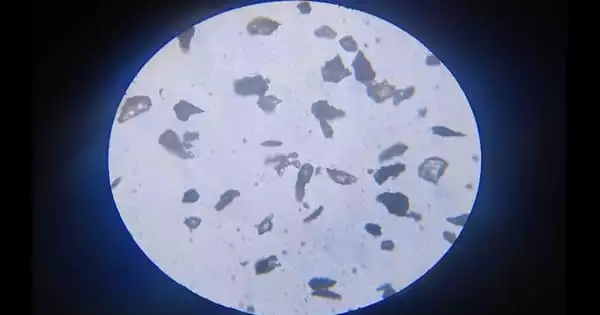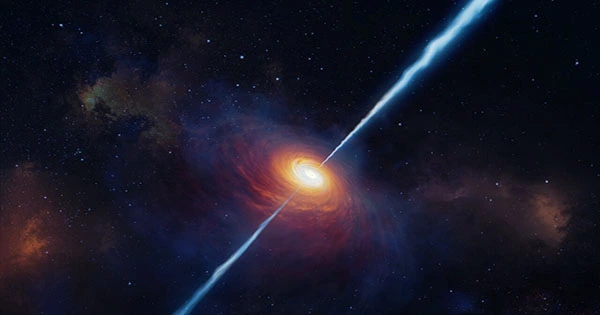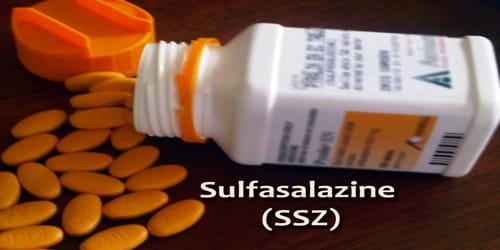A novel approach to the problem of spring cleaning on the moon: why not zap the grime away with an electron beam? A team led by the University of Colorado Boulder is pioneering a new approach to the problem of spring cleaning on the moon: why not zap the grime away with an electron beam?
The study, which was recently published in the journal Acta Astronautica, is the latest to investigate a persistent, and perhaps surprising, stumbling block in humanity’s dreams of colonizing the moon: dust. Astronauts walking or driving across the lunar surface kick up massive amounts of this fine material, also known as regolith.
“It’s really annoying,” said Xu Wang, a research associate at CU Boulder’s Laboratory for Atmospheric and Space Physics (LASP). “Lunar dust adheres to a variety of surfaces, including spacesuits, solar panels, and helmets, and it has the potential to damage equipment.”
So he and his colleagues devised a potential solution: an electron beam, a device that emits a concentrated (and safe) stream of negatively charged, low-energy particles. In the new study, the researchers used such a tool to clean a variety of dirty surfaces inside a vacuum chamber. And they discovered that the dust simply flew away.
Lunar dust is very jagged and abrasive, like broken shards of glass. The question facing his group was then: How do you unstick this naturally clingy substance?
Xu Wang
“It literally jumps off,” said lead author Benjamin Farr, who worked on the project as an undergraduate physics student at CU Boulder. The researchers have a long way to go before real-life astronauts can use the technology to do their daily cleaning. However, Farr believes that the team’s preliminary findings indicate that electron-beam dustbusters could become a common feature of moon bases in the not-too-distant future.
Spent gunpowder
Many Apollo-era astronauts may be delighted by the news. Several of these space pioneers expressed dissatisfaction with moon dust, which often resisted cleaning attempts even after vigorous brushing. Harrison “Jack” Schmitt, a member of Apollo 17’s lunar mission in 1972, developed an allergic reaction to the material and described it as smelling like “spent gunpowder.”
Wang explained that the problem with lunar dust is that it is nothing like the dust that accumulates on Earth’s bookshelves. The moon dust is constantly bombarded by solar radiation, which gives the material an electric charge. This charge, in turn, makes the dust extra sticky, almost like a sock fresh from the dryer. It also has a distinct structure.
“Lunar dust is very jagged and abrasive, like broken shards of glass,” Wang said. The question facing his group was then: How do you unstick this naturally clingy substance?

Electron beams appeared to be a viable option. A device like this could turn the electric charges on dust particles into a weapon against them, according to a theory developed from recent scientific studies of how dust naturally lofts on the lunar surface. Wang claims that if a stream of electrons strikes a layer of dust, the dusty surface will collect additional negative charges. If enough charges are packed into the spaces between the particles, they may begin to push away from each other, much like magnets do when the wrong ends are forced together.
“The charges grow so large that they repel each other, and dust ejects from the surface,” Wang explained.
Electron showers
To put the theory to the test, he and his colleagues filled a vacuum chamber with various materials coated in a NASA-created “lunar simulant” designed to look like moon dust. And, sure enough, after directing an electron beam at those particles, the dust poured off in a matter of minutes. The trick also worked on a variety of surfaces, including spacesuit fabric and glass. According to Wang, the goal of this new technology is to clean the finest dust particles, which are difficult to remove with brushes. The method was able to clean dusty surfaces by 75-85 percent on average.
“It worked pretty well, but not well enough for us to call it a day,” Farr said. The researchers are currently testing new methods for increasing the cleaning power of their electron beam. However, study coauthor Mihály Horányi, a professor in LASP and the Department of Physics at CU Boulder, believes the technology has real-world applications. NASA has experimented with other methods of shedding lunar dust, such as embedding electrode networks into spacesuits. An electron beam, on the other hand, could be a lot cheaper and easier to deploy.
Horányi imagines that one day, lunar astronauts will be able to hang their spacesuits in a special room, or even outside their habitats, and clean them after a long day of kicking up dust outside. The electrons would do the rest.
“You could just walk into an electron beam shower to get rid of fine dust,” he explained. John Goree of the University of Iowa and Inseob Hahn and Ulf Israelsson of the Jet Propulsion Laboratory are also coauthors on the new study.
















